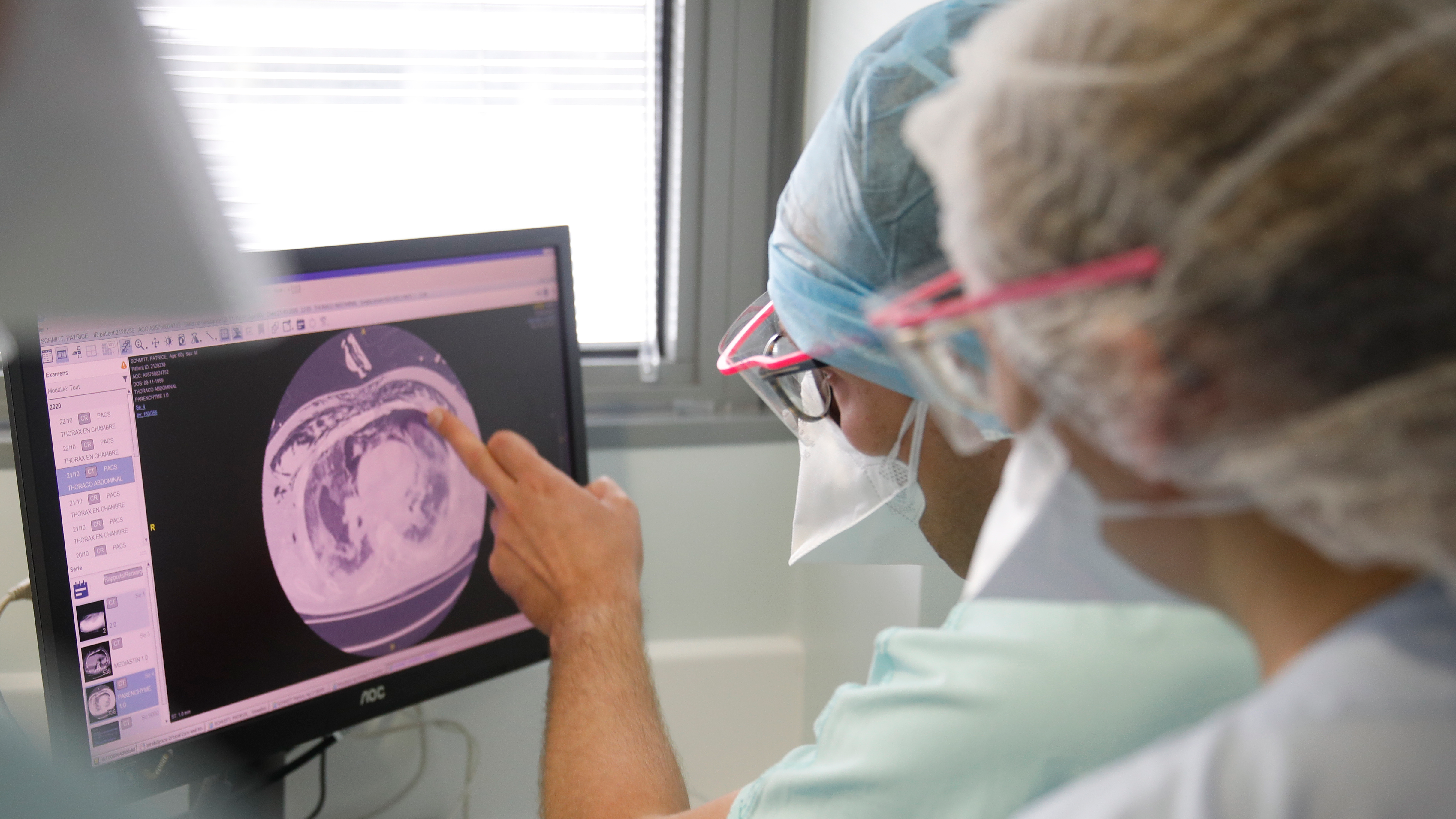
A recent study suggests about half of asymptomatic COVID-19 carriers may end up with damage to their lungs. /AP Photo
A recent study suggests about half of asymptomatic COVID-19 carriers may end up with damage to their lungs. /AP Photo
Scientists have made significant progress over the past few decades in understanding the role of hyaluronic acid in pulmonary health and disease – and now some suspect it could explain why some COVID-19 sufferers struggle with breathing.
Hyaluronic acid is a molecule of extracellular matrix that is naturally produced in the body. Its main function is to act as a thin protective layer or lubricant, but it is also a key regulator of inflammation and fibrosis in the lung.
Past studies have shown a correlation between high levels of hyaluronic acid and spots throughout the lungs in X-ray images, an observation that has also been made in seriously ill COVID-19 patients.
Daniel Jacobson, the lead researcher for computational systems biology at Oak Ridge National Laboratory in Tennessee, U.S., has been leading a study to understand how COVID-19 affects human body systems.
The research suggests that health risks to asymptomatic coronavirus carriers could be more significant than previously realised, with as many as half of them going on to develop varying degrees of damage to their lungs.
"There may be a fair amount of damage going on that they're completely unaware of. But they can go from asymptomatic to a 'long hauler' with long-term outcomes," adds Jacobson.
"If all that is true, that really should change how we think about this disease, even from a public health perspective," warns Jacobson. "Because an asymptomatic infection can lead to a long-term disability [and] that [can have] a radical impact on society."
Currently most countries are focusing their testing and treatment efforts on those suffering symptoms of the virus such as a fever or a cough.

CLICK: MICROSCOPIC LIFE EMERGING FROM MELTING ICE COULD SHAPE OUR FUTURE
Using samples taken from inside the lungs, Jacobson's team has found the virus affects the level of hyaluronic acid in the lungs.
"It can absorb over a thousand times its own weight in water. It becomes a hydrogel," Jacobson told CGTN's RAZOR program. "And so what we saw in COVID-19 patients is the three genes that are responsible for synthesizing hyaluronic acid were all significantly up-regulated, and two of the genes responsible for keeping it under control were significantly down-regulated.
"You're also letting a lot of plasma, a lot of water effectively, leak into that same space and [it is] going to form a hydrogel – it's like having Jell-O in your lungs. And those are the surfaces where you're trying to exchange oxygen and carbon dioxide, and that simply doesn't happen well through the hydrogel."
This could explain why some COVID-19 patients have suffocated even when on ventilator support.